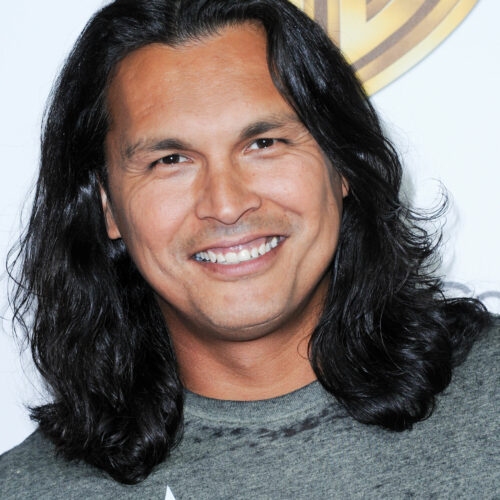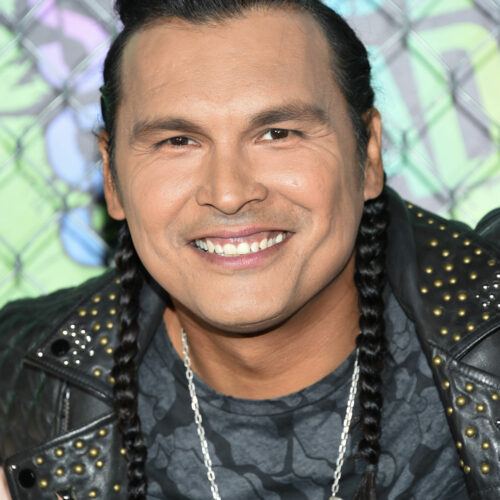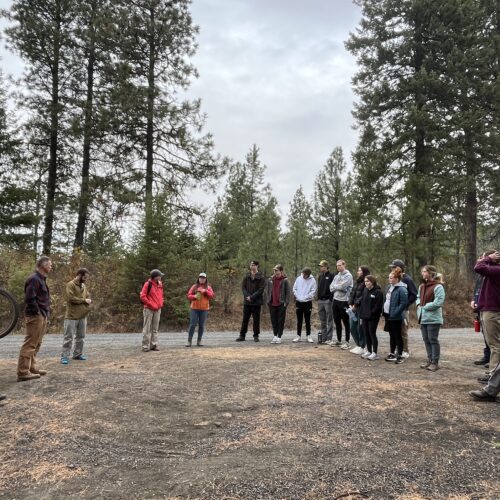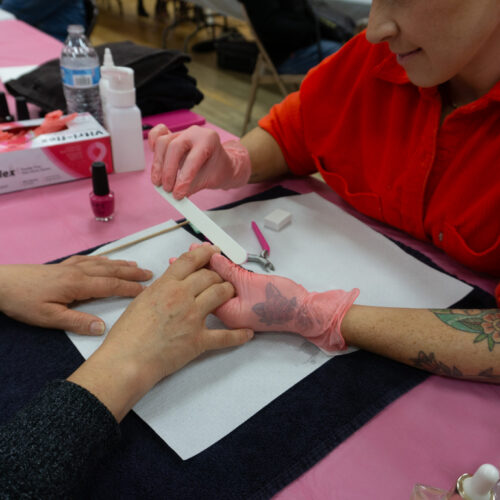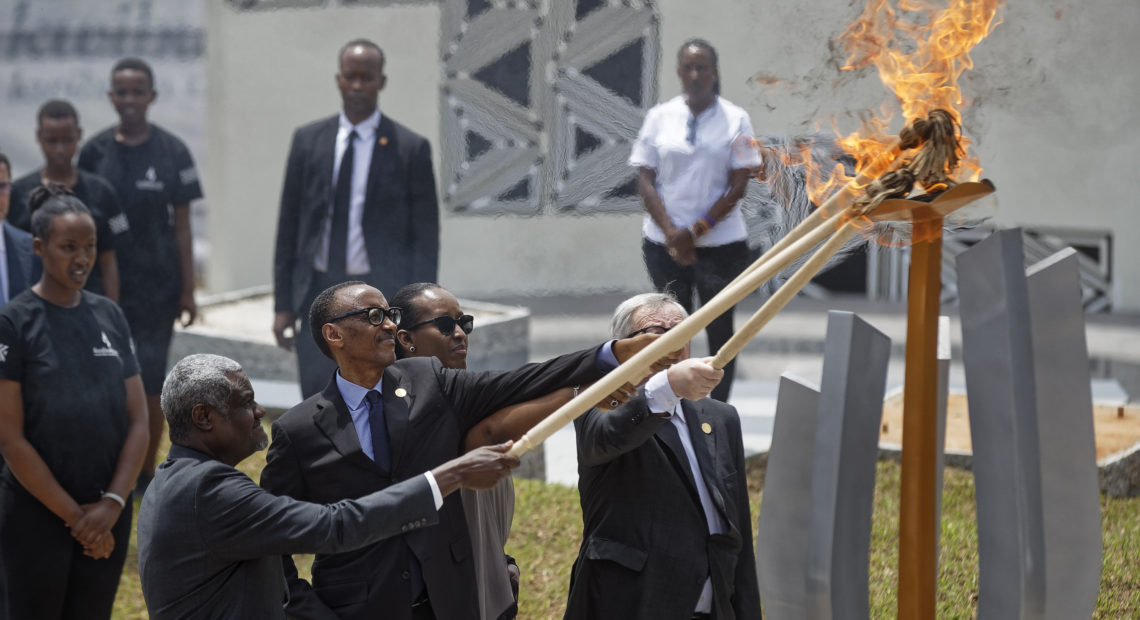
Rwanda’s Genocide Victims Remembered 25 Years Later
PHOTO: From left to right, Chairperson of the African Union Commission Moussa Faki Mahamat, Rwandan President Paul Kagame, Rwandan First Lady Jeannette Kagame, and President of the European Commission Jean-Claude Juncker, light the flame of remembrance at the Kigali Genocide Memorial in Kigali, Rwanda on Sunday. CREDIT: Ben Curtis/AP
BY FRANCESCA PARIS
With the start of collective mourning set to last for months, Rwandans are marking 25 years since a genocide that killed hundreds of thousands of people.
In the nation’s capital on Sunday, President Paul Kagame led foreign dignitaries and Rwandan people in memorial ceremonies, including laying wreaths of white flowers and lighting a flame at the Kigali Genocide Memorial Center. The flame will burn for 100 days, the entirety of the annual period of mourning, which mirrors the length of the genocide.
About 800,000 Rwandans were killed during the 1994 genocide, most of them from the country’s Tutsi minority.
“Twenty-five years later, here we are,” Kagame said. “All of us. Wounded and heartbroken, yes. But unvanquished.”
Leaders of Chad, Republic of the Congo, Djibouti, Niger, Belgium, Canada, Ethiopia and the African Union and European Union were among the many in attendance, The Associated Press reports.
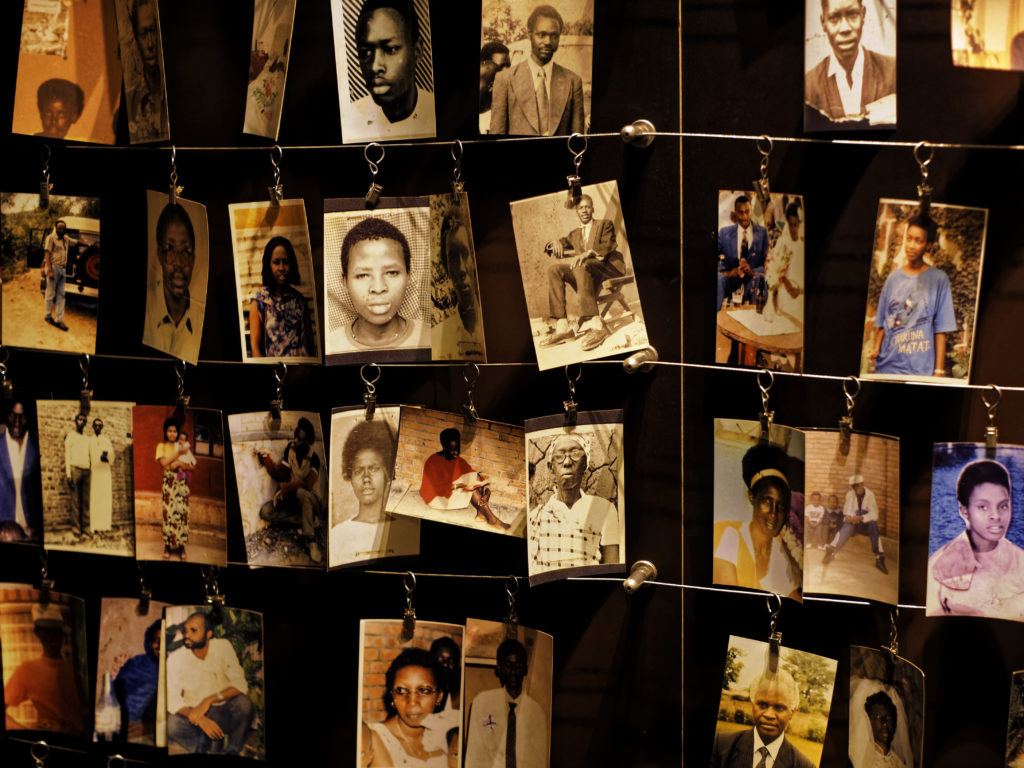
Family photographs of some of those who died hang on display in an exhibition at the Kigali Genocide Memorial center on Friday. CREDIT: Ben Curtis/AP
After the ceremony, Rwandans walked through the city, from the Rwandan Parliament to the city’s Amahoro National Stadium for a night vigil. Others across the world marked the anniversary online with #Kwibuka25 — the word for “remember” in Kinyarwanda, the country’s official language.
“Time can never erase the darkest hours in our history,” wrote Jean-Claude Juncker, president of the European Commission, on Twitter. “But it is at the heart of our darkest moments that begins our ascent to the light.”
During the commemoration period in previous years, Rwandans have held memorial ceremonies in villages and districts where victims are buried, listening to survivors give testimony and local and national leaders tell the history of the genocide, according to The Conversation.
Ethnic violence broke out in Rwanda on April 7, 1994, after President Juvénal Habyarimana of the country’s Hutu majority died in a plane crash, along with Burundi’s Hutu president. Hutus said that Tutsi rebels had shot down the plane as it approached Kigali airport.
Killing began within hours, as many in the country turned on the Tutsis and even moderate Hutus, often targeting their own neighbors. The violence continued until Tutsi-led rebels took control of the capital in July.
The genocide was marked by a rapid, well-organized campaign of violence, as well as the systematic rape of hundreds of thousands of women. Some victims were buried in mass graves that went undiscovered for more than two decades, including four unmarked graves discovered just last year.
The violence also highlighted a failure on behalf of international peacekeeping forces. Shortly after the genocide began, the U.N. Security Council pulled most of its peacekeepers out of Rwanda, causing the tragedy to be “compounded by the faltering response of the international community,” according to the U.N.
David Simon, co-director of Yale’s Genocide Studies Program, said that the withdrawal of forces stemmed in part from France’s connection to the genocidal regime.
“[Rwandans] remain, I think, justifiably very angry at the way the world, especially in the form of the United Nations but also the French in particular, let them down,” Simon told NPR’s Lulu Garcia-Navarro. “And that still reverberates in 2019.”
French President Emmanuel Macron said on Sunday that he wanted to create a national day of commemoration for the genocide.
On Friday, Macron had ordered a government study into France’s role in Rwanda before and during the the genocide, the AP reports. A group of researchers and historians has been tasked with investigating the “role and involvement of France” and drawing conclusions within two years.


